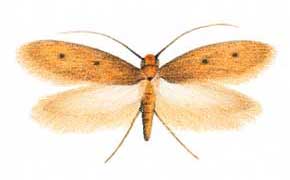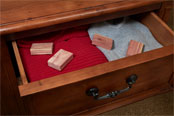Why Cedar
History
In the third millennium B.C., the Indus civilization (located in modern Pakistan) used cedar to create lavish temples and royal palaces. Alexander the Great built great naval fleets from this long-lasting wood. In America, Indian tribes used red cedar to build totem poles, believing it held spiritual powers. In the 18th century, European furniture makers began using American aromatic cedar in travel trunks and bridal hope chests to protect keepsakes and fine woolens.
 Origins
Origins
A member of the juniper family, aromatic Eastern red cedar (Juniperus virginiana) is native to the forests of the South Central United States. Many different species of cedar exist, but only aromatic cedar possesses the qualities that make Woodlore products so unique.
 Composition
Composition
Aromatic cedar is made up of white and red sections of wood. The white section is referred to as sapwood. The red wood is called heartwood, as it contains the aromatic oils. Woodlore products include at least 80% heartwood for the greatest aromatic benefit. After one year, a light sanding with a medium sandpaper restores the aromatic properties.
 Efficacy
Efficacy
People have long used aromatic cedar to repel moths and some types of carpet beetles from fine woolens. Now scientific study has proven that this remarkable wood also works against certain species of cockroaches and silverfish. Although aromatic cedar cannot kill these insects, it does effectively repel them, providing an all-natural alternative to chemical repellents.
 Benefits
Benefits
Cedar shoe trees, hangers, blocks, balls and sachets play a vital role in protecting fine shoes and clothing. Aromatic cedar helps to repel moths and other insects and, because we don't coat our cedar with varnishes or lacquers, our all-natural shoe trees absorb moisture from footwear. Aromatic cedar also deodorizes with its naturally fresh scent!
